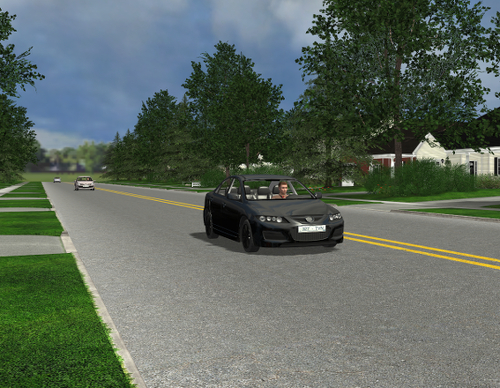Young children are developmentally very bad at traffic safety. This was early demonstrated by Swedish researcher Stina Sandels in the 1960’s. In her groundbreaking studies where she studied children’s behaviour in traffic situations, she came to the conclusion that children under the age of 12 are developmentally unable to handle traffic in a safe way. She stated that ‘even the best road safety education cannot adapt a child to modern traffic, so that traffic has got to be adapted to the child.’
Since then, research has repeatedly shown this to be true. For instance, children before the age of eleven are usually not able to think from another perspective, and thus often fail to understand that a curve, hill or parked car may obstruct their view.
But in order to adapt traffic to children, we still need to study the choices children make in various traffic situations. And nowadays, when we’re aware of the high injury risk, we need to do such studies “in vitro”, in perfectly safe conditions.
How can we do that?
Well, nowadays there are technical options never before seen. An article in our current issue of Injury Prevention is using and further developing virtual reality to study if children crossing a street adjust their walking speed to avoid oncoming traffic. The technology is obviously still at an early stage, but Morrongiello, Corbett, Milanovic, Pyne & Vierich is building on previous research but with the improvement that they use a system that allows children to physically walk across a street in a virtual environment (while actually walking in an empty room, supervised by researchers).

The study shows that children’s average walking speed is a bad proxy for how fast they walk under the threat of oncoming traffic. This finding emphasizes the importance of using a VR testing environment where children can actually move around themselves instead of controlling an avatar that corresponds to their average normal walking speed, which has been used in previous studies.
Incidentally, I just read a long feature in Time about how far virtual reality has developed. The full article is unfortunately only available to subscribers, but there is a brief version here. To give a very short summary: virtual reality tec has come further than we think, but many headsets and graphics on the market are still fairly clunky (but new tec is set to reach the market within 18 months). The article also points out that VR can be useful for a wide range of purposes, including conference meetings, treatment of phobias, empathy training, and research. They don’t mention traffic safety research, but that just goes to show that each of us nerds in the world have our own specific interest to bring to the table.
One major differentiating feature of VR systems seems to be whether one would explore the virtual worlds by walking around or sitting on the couch. Well, for traffic safety research, the article by Morrongiello et al shows the value of one that lets the subject walk around.
Or cycle around – that seems easier to accomplish, using a training bike that responds to the virtual environment. For adults, studies using car driving simulators has been available for more than 20 years, but of course, that doesn’t require a VR headset.
The next technological step that VR geeks dream of is apparently “enhanced reality” – a headset that superimposes virtual holograms onto your real field of vision. From what I understand, this is more difficult technologically, but if accomplished, I imagine it could be a gold mine for safety research and training.